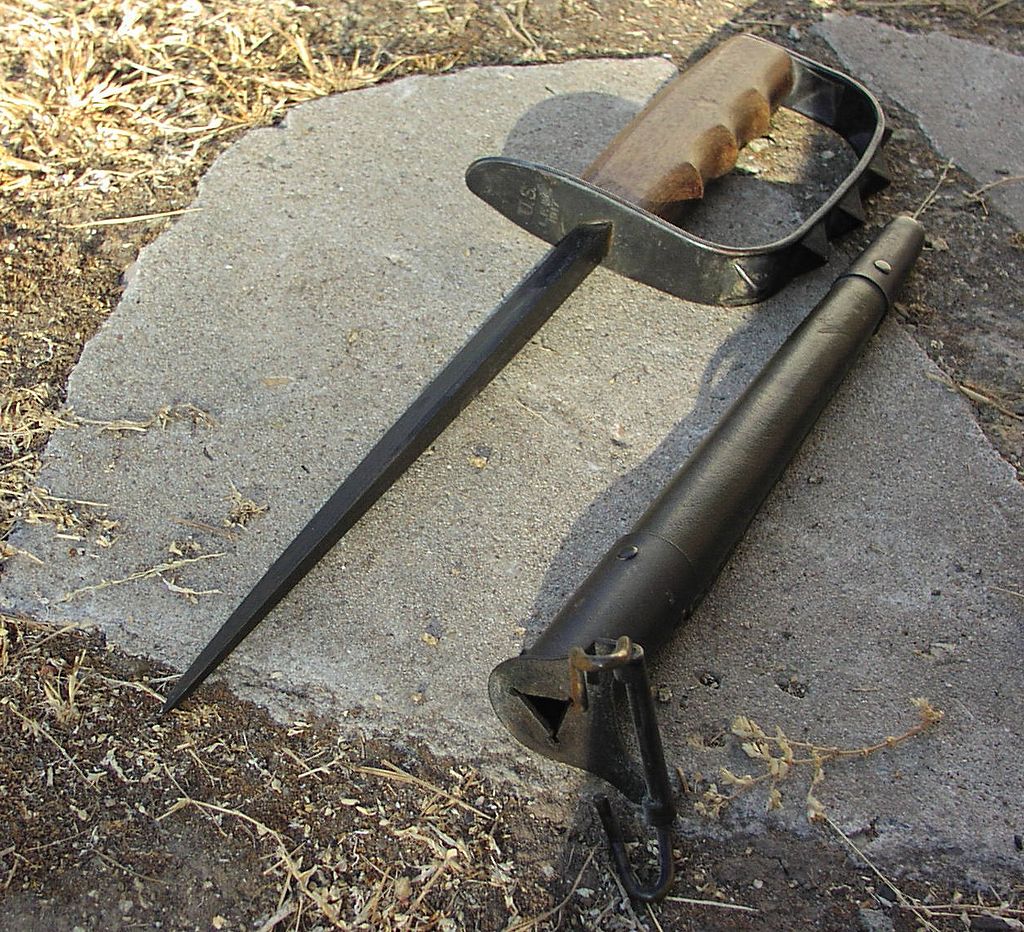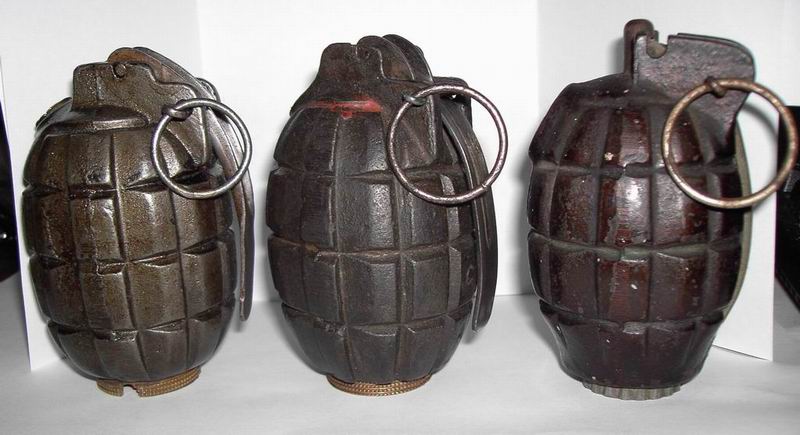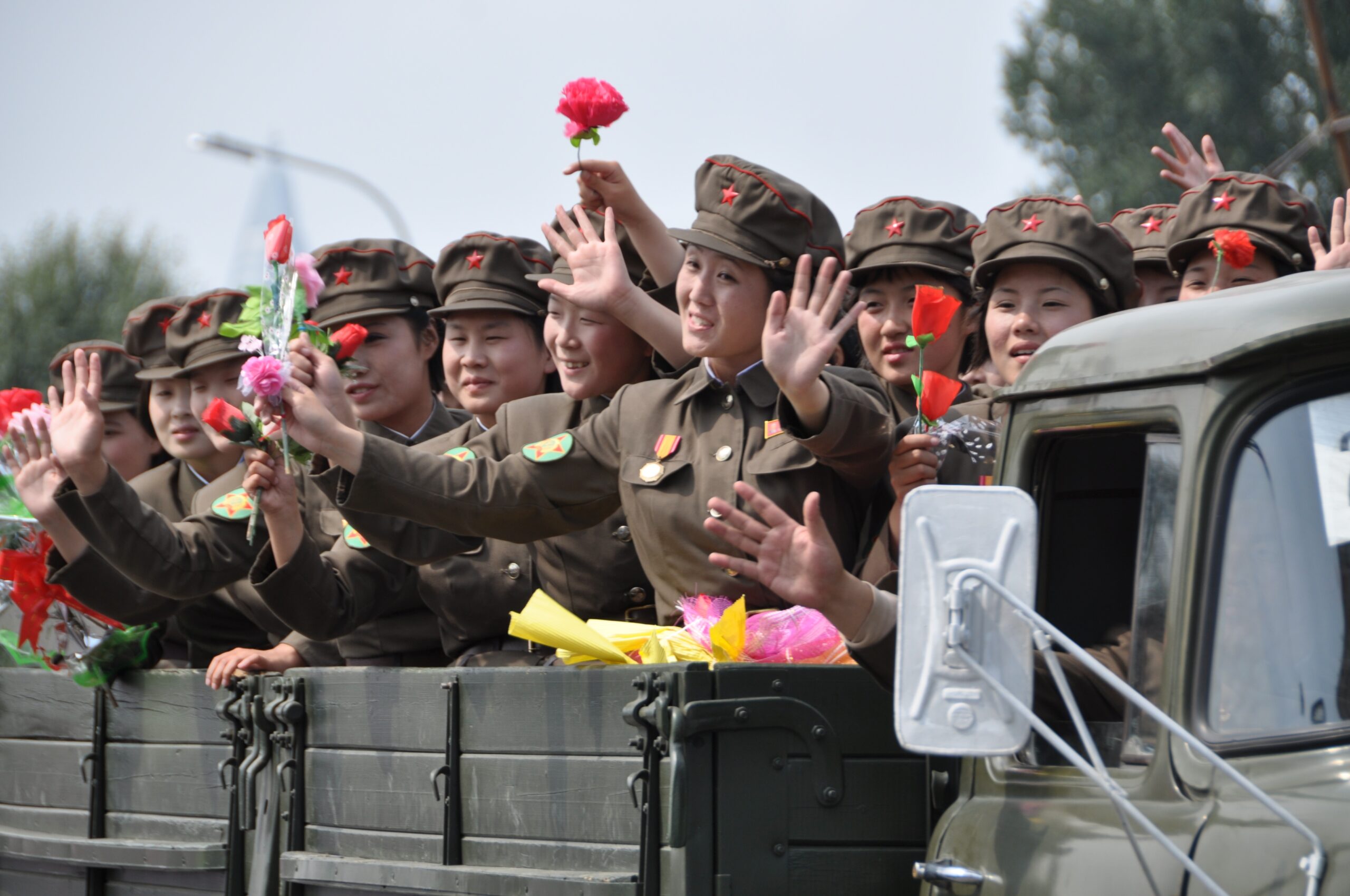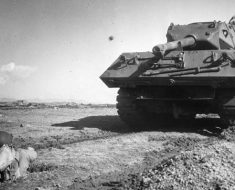Close-Quarters Combat in the Trenches: The Role of Hand-Held Weapons in World War I and the Units That Used Them
There were a number of different weapons deployed during the fierce trench fighting of World War I. While there were huge advances in industrial scale warfare with technologies being developed such as machine guns, aircraft, tanks, and chemical weapons, in this article we will take a brief look at the close quarter combat weaponry used on the Western Front.
Trench Knives
A trench knife is a specialized type of knife that was designed for close combat fighting in WWI trench warfare during WWI. Trench knives typically have a sturdy handle and a short, sharp blade that is designed for thrusting and stabbing.
Read More: Surgeon Removes Live Grenade From Soldier’s Chest
They differed from bayonets which tended to be much longer and mainly used as attachments for a rifle, turning it into a large spear. Trench knives were originally developed to give soldiers a close-range weapon for fighting in the confined spaces of trenches, where guns and other larger weapons were difficult to use.

Some types of trench knives and bayonets
The M1917 Trench Knife: This knife was developed by the United States for use in World War I and was issued to American soldiers who served in the trenches. It had a triangular blade that was about 6 inches long, and the handle was made from wood.
The German Trench Knife: The German Army also developed a specialized trench knife for use in close quarters combat in the trenches. It had a short, double-edged blade and a handle that was designed to fit securely in the hand.
Read More: US Military Still Uses its Most Iconic of Weapons
The Lebel Model 1886 Bayonet: This was a standard-issue bayonet for the French Army during World War I, and it could be fitted to the end of a Lebel Model 1886 rifle to give soldiers a close-range weapon. It had a long, triangular blade that was designed for thrusting and could be used as a makeshift spear.
Other Trench Weapons
A trench club is a type of blunt weapon that was used during World War I and World War II for close quarters combat in the trenches. Trench clubs were typically made from wood or metal and had a short, sturdy handle with a heavy, rounded head. These were also designed for use in the confined spaces of the trenches. Trench clubs were often used by soldiers to deliver powerful blows to their opponents. These were capable of breaking bones or knocking an enemy unconscious.

Grenades or Hand Bombs
Grenades were widely used during World War I as a means of attacking enemy positions and fortifications. Here are a few examples of the use of grenades during the war:
Hand grenades: Hand grenades were small explosive devices that could be thrown by soldiers. They were used to attack enemy positions and to clear enemy troops out of trenches and other fortifications. Hand grenades were used by all sides during World War I.

Mills bomb: The Mills bomb was a type of hand grenade developed by the British for use in World War I. It was first used in 1915 and became one of the most widely used hand grenades of the war.
Egg grenade: The egg grenade was a German hand grenade used during World War I. It was named for its egg-like shape and was used to attack trenches and dugouts.
Read More: The Deadly ‘Iron Harvest’ Still Threatens European Farmers
French F1 grenade: The French F1 grenade was a hand grenade used by the French Army during World War I. It was designed to be thrown a short distance and had a delay fuse that allowed the user to take cover before the grenade exploded.
US Mk 2 grenade: The US Mk 2 grenade was a hand grenade used by the United States during World War I. It was based on the British Mills bomb and was used to attack enemy positions and trenches.
Pistols

Pistols were widely used during World War I as a means of self-defence and for close-range fighting in the trenches. They were usually carried by officers or machine gunners. Here are a few examples of the use of pistols during the war:
Mauser C96: The Mauser C96 was a German semi-automatic pistol that was widely used during World War I. It was known for its reliability and accuracy and was used by both the German Army and Navy.
Colt M1911: The Colt M1911 was a semi-automatic pistol used by the United States during World War I. It was a popular choice for American soldiers due to its durability and reliability.
Read More: Point du Hoc – The Lost Battlefield
Luger P08: The Luger P08 was a German semi-automatic pistol that was widely used during World War I. It was known for its accuracy and was used by both the German Army and Navy. There was also a long barrelled version called The ‘Artillery Luger’.
Webley Mk IV: The Webley Mk IV was a 6 shot revolver used by the British Army during World War I. It was a popular choice for British soldiers due to its reliability and huge stopping power.
Revolver modèle 1892: The Revolver modèle 1892 was a French revolver used during World War I. It was a popular choice for French soldiers due to its size. However it suffered in the heavy mud of trench warfare.

Specialist Troops
During World War I, trench raiding was a tactic used by both sides in the conflict to gather intelligence, disrupt enemy communications and supply lines, and demoralize the enemy. Trench raiding parties were usually small, highly trained units of soldiers who were equipped with specialized weapons and equipment for close quarters fighting in the trenches.
These units often conducted surprise attacks on enemy trenches at night. They would often take advantage of the element of surprise and confusion that resulted from the sudden intrusion. The objective of a trench raid was typically to capture or kill enemy soldiers, destroy equipment and supplies, and gather intelligence before withdrawing back to friendly lines.
Read More: Japanese Submarine her 80-man Crew Still Entombed
Both the Allies and the Central Powers developed specialized units for trench raiding. These units were typically made up of volunteers who were selected for their physical fitness, combat skills, and ability to operate in small groups. The training of these units was often intense, and included instruction in the use of stealth, silent weapons, and explosives. Trench raiding troops were also trained in the use of poison gas and flamethrowers, which were often used to create confusion and panic in the enemy’s ranks.
Trench raiding played a significant role in the conduct of the war, and the specialist trench raiding troops of World War I were known for their bravery and determination on the battlefield.
The Arditi or Daring Ones
The Arditi were elite soldiers in the Italian Army during World War I. They were trained in hand-to-hand combat and specialized in close-quarters fighting and surprise attacks. The term “Arditi” means “daring ones” in Italian.
The Arditi were organized into small, independent units that were used for a variety of purposes. This included the suppression of mutinies and the recapture of lost positions.
Read More: The Largest Battles of World War Two
They were also used to spearhead attacks on enemy trenches and were known for their skill in using small arms, bayonets, and hand grenades. In addition to their combat roles, the Arditi were also responsible for providing security and maintaining order behind the front lines.
The Arditi were highly respected within the Italian Army, and their distinctive black and red uniform and distinctive helmet were symbols of their status as elite soldiers. The Arditi were disbanded at the end of World War I, but the legacy of their courage and determination lives on to this day.
German Sturmtruppen

The German Sturmtruppen were elite assault units that were formed during World War I. They were trained in close quarters fighting and specialized in trench warfare. The term “Sturmtruppen” means “storm troops” in German, and the units were known for their aggressive and daring tactics on the battlefield. The Sturmtruppen were formed in response to the bloody stalemate of trench warfare, which had led to a lack of progress on the Western Front.
Read More: Man Steals Rocket From Ukrainian Battlefield, it Blows up in his Car
They were tasked with breaching enemy lines and exploiting any weaknesses in the enemy’s defences. The Sturmtruppen were equipped with light machine guns, flamethrowers, and explosives, and were trained in the use of poison gas. They were also trained in the use of stealth and surprise and were often used to infiltrate enemy lines and disrupt communications and supply lines.
The Canadians
During World War I, the Canadian Expeditionary Force (CEF) included several units that specialized in trench raiding. These units were trained in close quarters combat and were equipped with specialized weapons and equipment for fighting in the trenches.
One of the most famous Canadian trench raiding units was the 1st Canadian Trench Raiding Company, which was formed in February 1917. The unit was made up of volunteers from the CEF and was trained in the use of explosives and silent weapons such as knives and clubs.
Read More: The Longest Day: John Wayne ‘punished’ Darryl F. Zanuck for Publicly Insulting him
The 1st Canadian Trench Raiding Company conducted several successful raids on enemy trenches, often targeting enemy strongpoints and communication centers.
Another notable Canadian trench raiding unit was the 2nd Canadian Trench Raiding Company, which was formed in March 1917. This unit was also made up of volunteers from the CEF, and were trained in the use of hand grenades and flamethrowers. The 2nd Canadian Trench Raiding Company conducted several successful raids on enemy trenches, and played a key role in the capture of the strategically important Hill 70 in August 1917.
Summary
We have only really taken a brief look at the various types of hand-held weapons that were used by soldiers in the trenches during World War I. These included knives, bayonets, clubs, pistols, and hand-held explosives such as grenades. These tools were just as important as the more technological weapons in shaping the tactics and strategies of the war.






